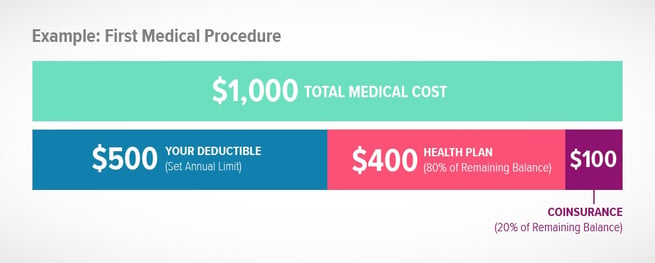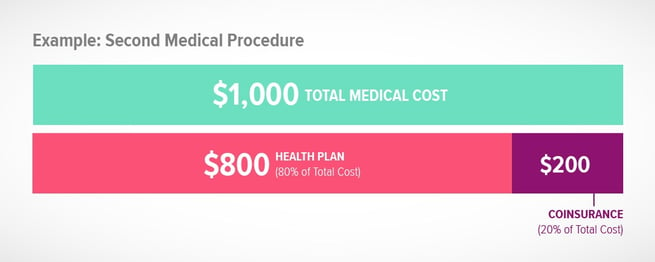Last week I shared what I consider the Big 5 Benefits and how you can get started evaluating different packages. In this post we’ll take a deeper dive into what to look for when comparing medical benefits, but first it’s important to understand some basic plan terminology and how health insurance works.
How Health Insurance Works
Most benefits are simply an insurance policy designed to protect you from catastrophic financial expenses. The way health insurance works is that you contribute funds to a “piggy bank” of sorts with a group of other people. Because everyone puts a little into the piggy bank, no one has to shoulder the entire financial burden if something unexpected happens to them. Instead, they pay a little out-of-pocket and the rest is covered using funds from the piggy bank, a.k.a. health insurance. In the case of medical benefits, the piggy bank deposits are pooled from you, your employer, and your fellow employees who are covered under the same health plan.
The Major Difference Between Medical Plans
The primary differences between health insurance plans are the member responsibilities: (1) how much you are required to contribute to the plan in order to use it and (2) the formula for determining how much you pay out-of-pocket versus how much is paid by your health insurance when you need a service.

Typically, all health plans cover 100 percent of the cost for preventative care, such as annual physicals and screenings. How you share the cost for the rest of your healthcare services is based on three plan design components.
1. Deductible: This is the amount each year that you’re responsible for paying before your insurance kicks in to help. Every plan has a different deductible amount.
2. Coinsurance & Copays: Both of these terms describe your share of the cost of a covered healthcare service. Coinsurance is calculated as a percentage of the remaining balance after you have paid the deductible. Copays are a fixed dollar amount that you usually pay at the point of service, like a doctor’s visit or when paying for prescription medicines.
3. Out-of-Pocket Maximum: This is the maximum amount you could end up paying through coinsurance or copays in one year. After you meet this limit, your insurance plan will usually pay 100% of the remaining cost of covered services. This is the part of the benefit that protects you the most from the catastrophic impact of a major health care event. It’s important to note though that sometimes deductibles, copays and coinsurance for specific services will not count toward this limit.
A Practical Example
Here’s an example of how these three components work together. Let’s imagine you have a health plan with a $500 deductible and 80% coinsurance, and you need a medical procedure that is going to cost $1,000. Because you have a $500 annual deductible, you would first have to pay that amount. Your health insurance plan would cover the next 80%, which is $400. The remaining 20% balance ($100) would come out-of-pocket, making your total personal responsibility $600.

Now let’s imagine you need a second $1,000 medical procedure in the same year. You already paid your annual deductible of $500 the last time around, so this time your total portion of the bill would only be $200.

What to Look for When Comparing Medical Benefits
Now that you know the primary difference between health insurance plans is the member responsibility, here are some important components to consider when comparing medical benefits.
1. Your Contribution Amount & the Out-of-Pocket Maximum
Take note of the required contribution amount for each plan option. This is the amount that will be deducted from your check each pay period to help cover the “Health Plan” portion of your medical expenses. Although your contribution may seem like a lot, remember that medical insurance is very expensive and your potential employer is probably footing 70 percent or more of the total cost.
You basically need to select a plan that enables you to balance how much of the out-of-pocket costs you can afford to pay before you reach the out-of-pocket limit. If you can fund more of those costs, you can enroll in an option with a lower employee contribution. But if you want the health plan to take more of the risk, then you can expect to have a higher contribution deducted from your pay check.

2. The Provider Network
Every health plan has a designated network of providers (doctors, hospitals, etc.) that have agreed to offer services at specific rates for plan members. Your out-of-pocket costs are lower when you use this network. Some plans do not offer any coverage when you use providers outside of the network, which leaves you paying the entire bill.
If you have a favorite hospital or a preferred primary care physician or specialist, make sure they are in the health plan’s network of providers. If not, you will probably need to change providers to help lower your costs.

3. Coverage for Specific Medical Conditions
Remember that if you are healthy and don’t have any chronic conditions that need to be regularly managed, most of your care will fall under the preventive category, which is usually covered 100% when you use in-network providers. However, if you have specific health issues, you should dig deeper into the coverage for your condition. You may want to request a plan document and/or a schedule of benefits and do research on how your specific care needs will be covered.
It’s not a good idea to bring up your specific health issues during the recruiting process. Instead, I recommend calling the customer service line of the third-party benefits administrator that manages the plan to obtain these details. If there are some aspects of the employer’s plan you don’t like, you can also choose to purchase your own coverage through Healthcare.gov or directly from any of the health insurance carriers.

AdventHealth's Medical Benefits
At AdventHealth, we provide several different plan options to help meet your needs. Our Health Savings Plan requires lower contributions for you and is an IRS qualifying high-deductible plan. This means you can open a Health Savings account and set aside some of your contribution savings to help cover future needs. This is a great plan if you are relatively healthy with few expected non-preventative health issues.
If you or your family are relatively frequent users of healthcare services, you may find that our Traditional Plan is a better fit. It will cost you more from pay period to pay period, but provides a lower deductible and a more predictable copay structure for physician office visits.

With both plans, we encourage our team members to use facilities and providers that are owned or closely affiliated with our AdventHealth operations. This lowers the cost of your out-of-pocket expenses when you need a healthcare service.
Next Week: Retirement
Retirement benefits are frequently overlooked, but they’re actually your single largest benefit. Next week I’ll explain the different options employers provide and help you learn how to maximize this benefit. Let me know in the comments below if there are any specific questions you have!


